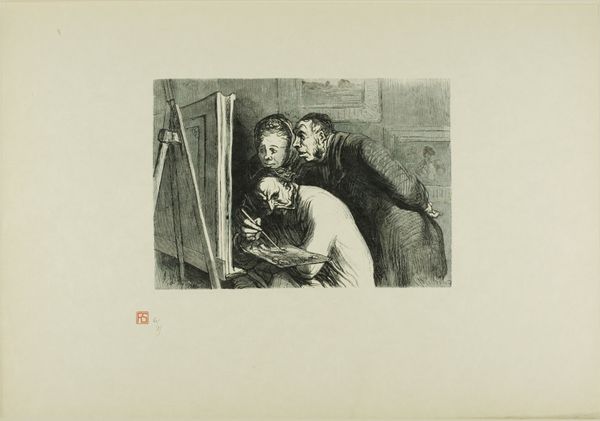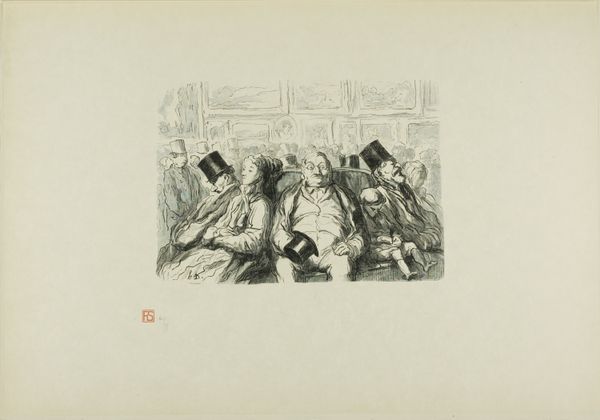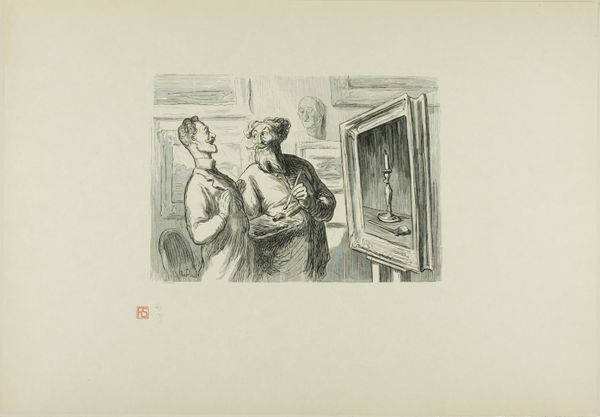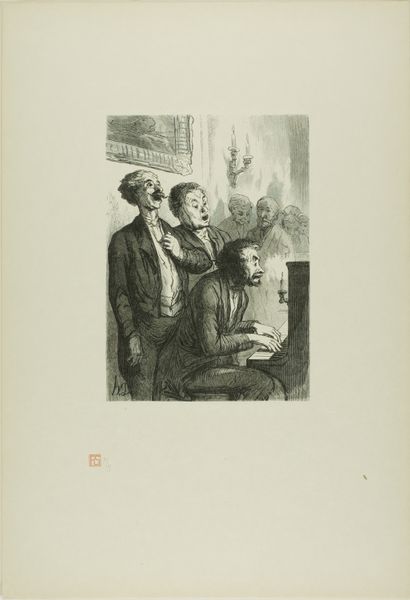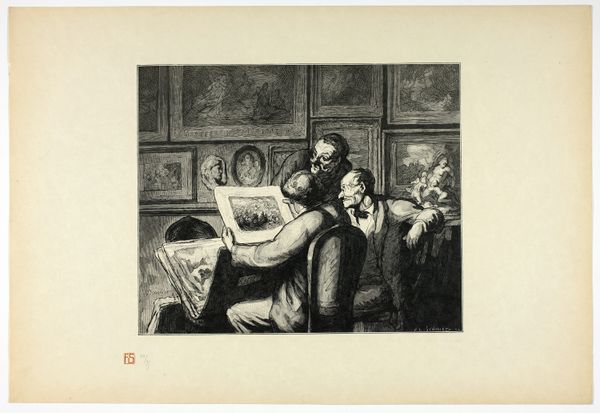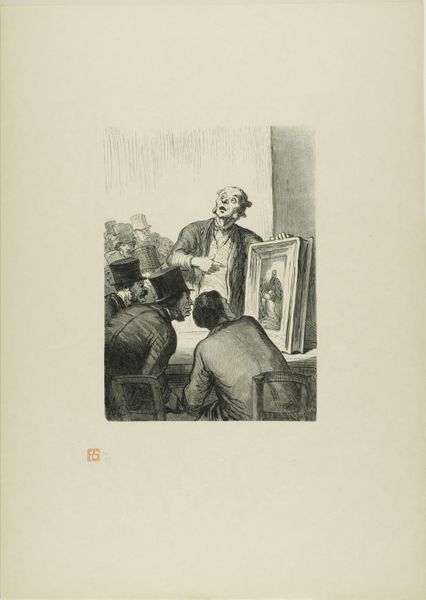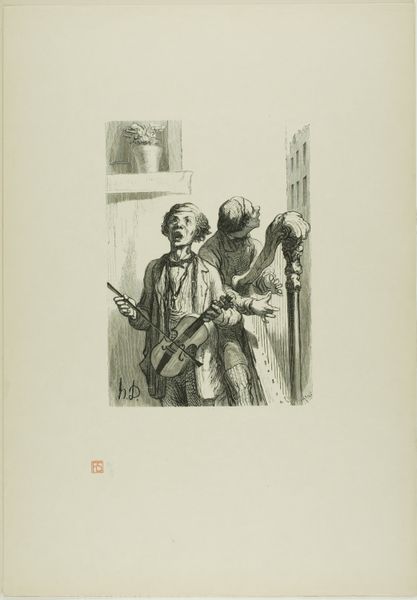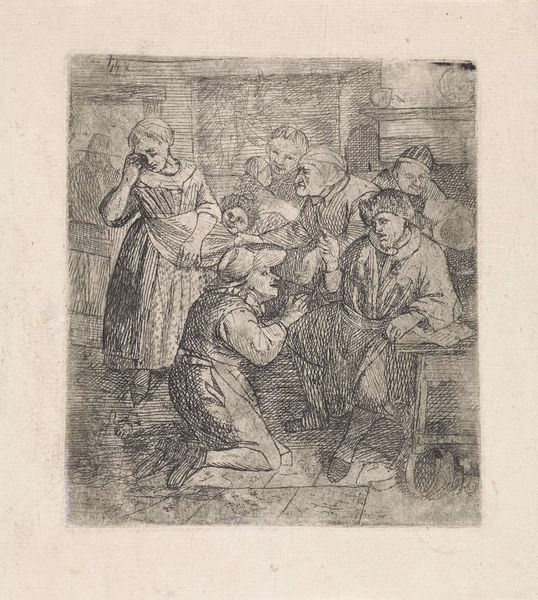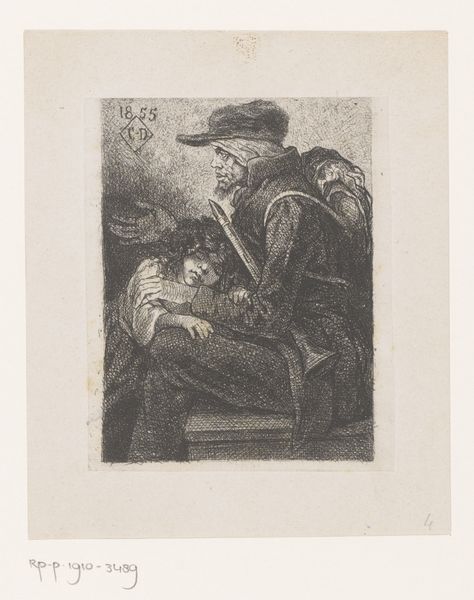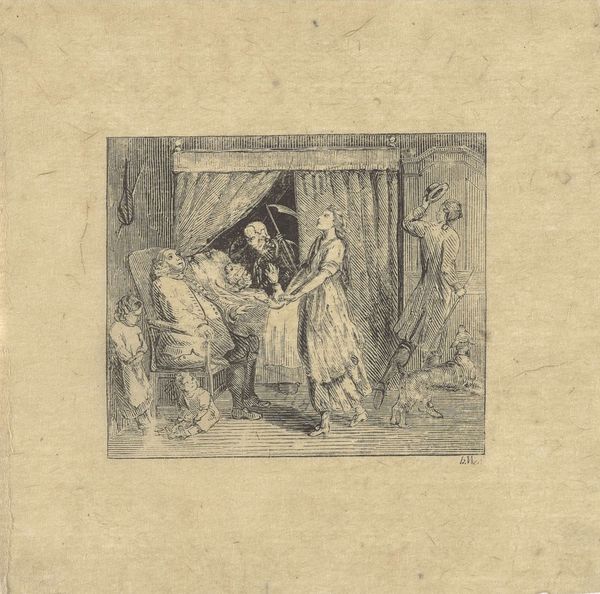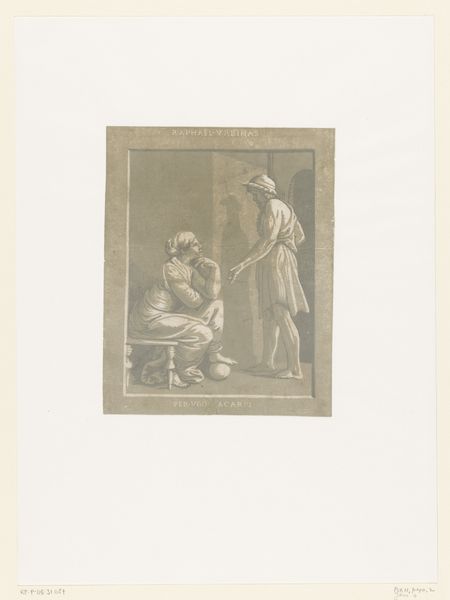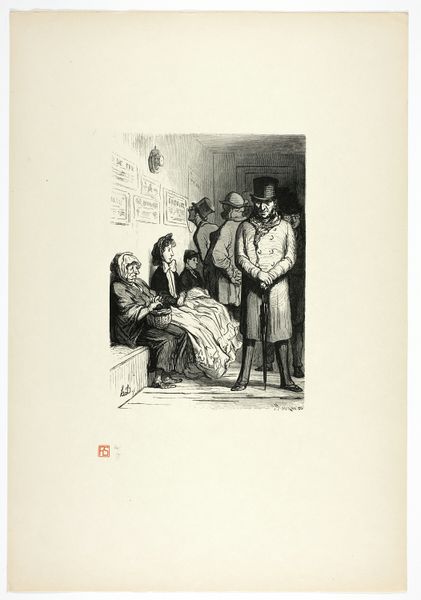
The Paintings Exhibition of 1868: Giving it the last touch Possibly 1868 - 1920
0:00
0:00
drawing, print, etching, paper, engraving
#
drawing
# print
#
etching
#
paper
#
genre-painting
#
engraving
Dimensions: 159 × 227 mm (image); 328 × 454 mm (sheet)
Copyright: Public Domain
Curator: Right now, we’re looking at "The Paintings Exhibition of 1868: Giving it the last touch", believed to have been created between 1868 and 1920. It’s an etching and engraving on paper by Etienne Carjat. Editor: My first impression is one of subtle chaos, the concentrated energy right before a big reveal. The monochromatic palette contributes to the somewhat gritty atmosphere; it feels unvarnished. Curator: Absolutely, the medium supports that sense. The etching process allows for fine detail but also creates a sense of immediacy. The figures are so caught up in the labor, right? The engraver certainly emphasizes process through both the imagery and the production. We see labor in its raw form; hands dirtied and stained, not a glorified artistic creation, but tangible, and, dare I say, slightly subversive commentary of artistic pretension. Editor: Yes, and there is a definite sense of class difference in the depiction. The figures seem almost caught between roles. Are they artists, artisans, or some hybrid? It highlights the blurred lines of cultural production and also calls attention to who gets to claim the title "artist". Their expressions suggest they know it. Curator: The figures look as if pulled from different aspects of that labor and are deliberately arranged to further question assumptions about "genius" in art. Think about the art world at this time: questions of what art *is* are everywhere, in response to the academy. Here, Carjat emphasizes a multiplicity of actors and hands needed in a successful creation, even in what is considered a work by an individual artist. Editor: That's right. This makes the context paramount. What exactly is the status of these figures? Were they properly compensated, who really gains from the exhibition, and how is artistic labour itself perceived by broader society? By making this print, is Carjat engaging with an act of making art more accessible? Curator: The accessibility of the art is interesting and not an aspect I had considered, but definitely fits Carjat’s approach to questioning modes of consumption through his imagery. It feels appropriate to recognize his critical attitude. Editor: I agree; thank you for sharing a great moment and context with the Carjat etching. Curator: My pleasure; it is wonderful how such a humble-looking piece of art brings such critical thinking!
Comments
No comments
Be the first to comment and join the conversation on the ultimate creative platform.
